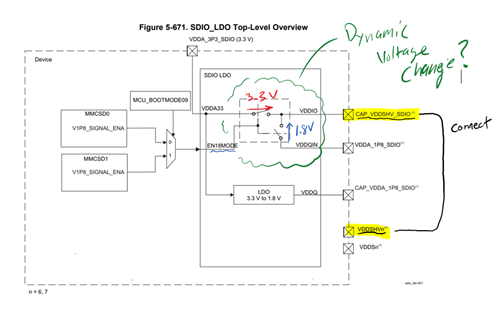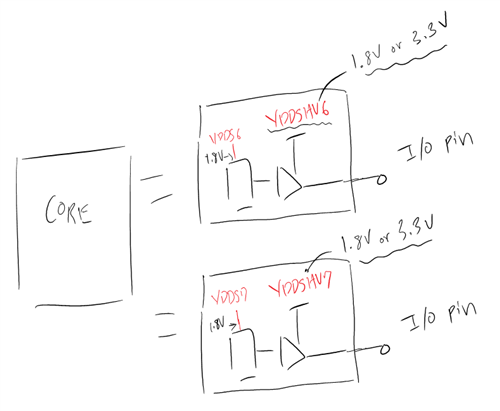First some quick back info...
AM65x/DRA80xM Silicon Revision 1.0:
- MMC0_SDCD == VDDSHV6
- MMC0_SDWP == VDDSHV6
- MMC1_SDCD == VDDSHV7
- MMC1_SDWP == VDDSHV7
To free up VDDSHV6 and VDDSHV7 for "dynamic voltage change"....Silicon Revision 2.0:
- MMC0_SDCD == VDDS_OSC1
- MMC0_SDWP == VDDS_OSC1
- MMC1_SDCD == VDDS_OSC1
- MMC1_SDWP == VDDS_OSC1
Question:
- "Dynamic voltage change" capability refers to the ability to use both 1.8V LVS SD Cards, and 3.3V SD Cards, yes?
- Is it possible to have 1 of the MMCSD (MMC0...) set to 1.8V, while the other (MMC1...) is set to communicates at 3.3V?
It seems since MMC0... used VDDSHV6, and MMC1... used VDDSHV7, they should be able to work simultaneously with different voltage SD cards...(1 card at 1.8V, the other at 3.3V)
Can you confirm this?
Regards,
Darren




